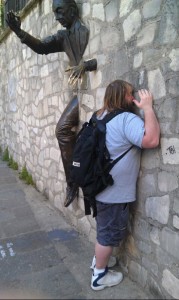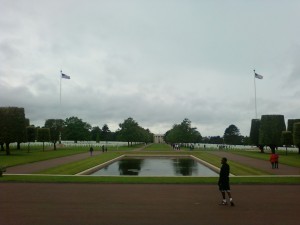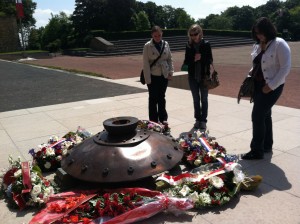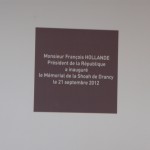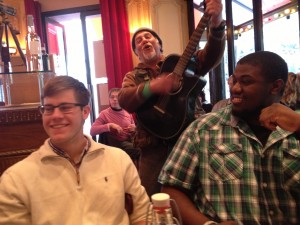By Rosamond Hoyle
Warding off the jet lag, we started off our Wednesday morning at a little café  next to our hostel, Café des Dames. As we finished up our coffee and croissants, we heard on the news that that evening, President Hollande would be speaking at a ceremony, adding four Resistance fighters’ remains into the Panthéon (a crypt for famous French citizens): Geneviève de Gaulle-Anthonioz, Pierre Brossolette, Germaine Tillion and Jean Zay. (The women’s families did not want their bodies exhumed, so their coffins are symbolic and contain soil from their gravesites.) We were all super excited to be in Paris during such a historical event so we decided to
next to our hostel, Café des Dames. As we finished up our coffee and croissants, we heard on the news that that evening, President Hollande would be speaking at a ceremony, adding four Resistance fighters’ remains into the Panthéon (a crypt for famous French citizens): Geneviève de Gaulle-Anthonioz, Pierre Brossolette, Germaine Tillion and Jean Zay. (The women’s families did not want their bodies exhumed, so their coffins are symbolic and contain soil from their gravesites.) We were all super excited to be in Paris during such a historical event so we decided to  change our plans for the day and go see the ceremony. As a group of girls, we were particularly interested because the Panthéon only has one other woman (Marie Curie) who was added because of her own merits and it was very special that two new women were being included.
change our plans for the day and go see the ceremony. As a group of girls, we were particularly interested because the Panthéon only has one other woman (Marie Curie) who was added because of her own merits and it was very special that two new women were being included.
